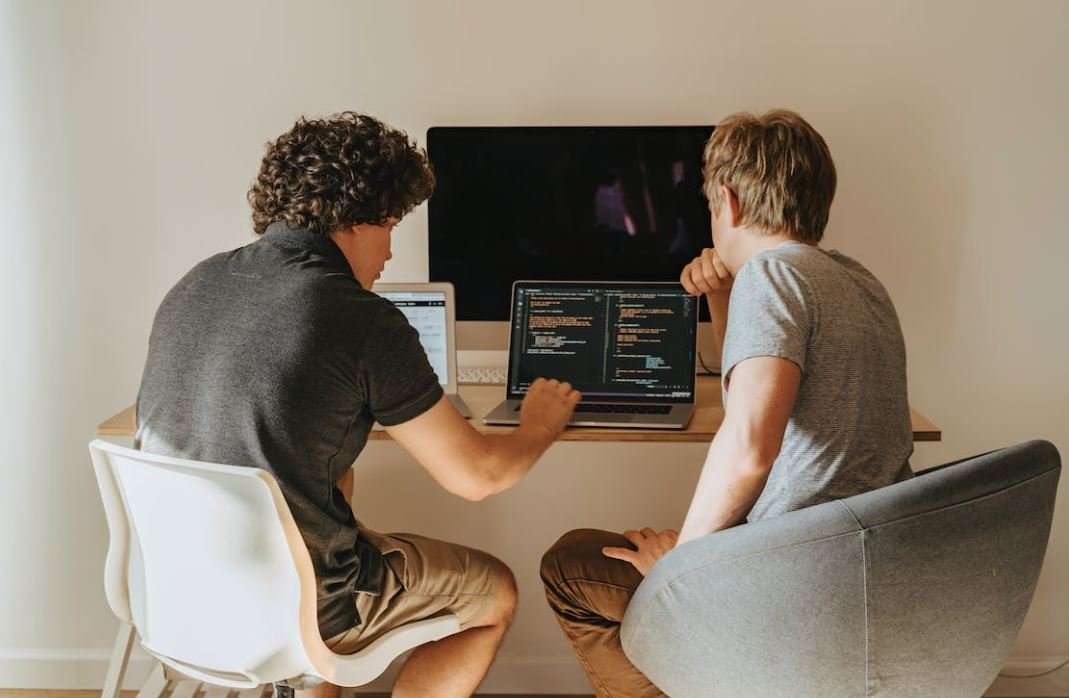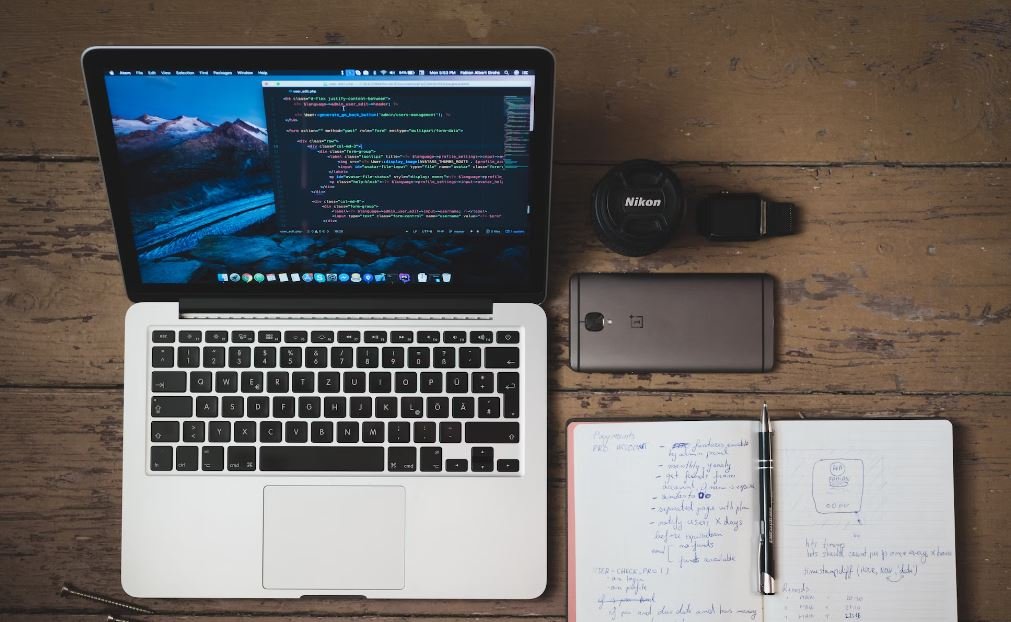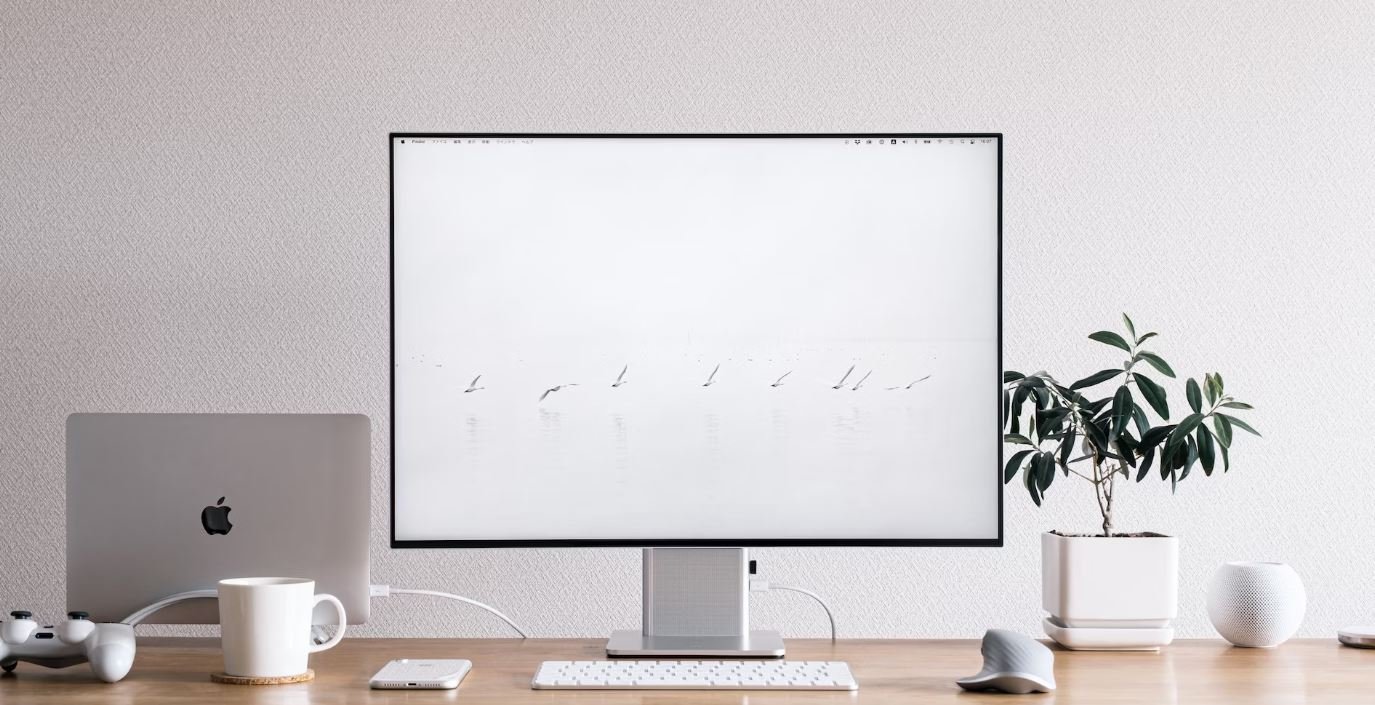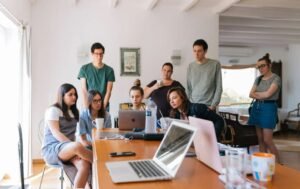AI Image Creation
Artificial Intelligence (AI) has made significant advancements in various fields, and one of its fascinating applications is image creation. From generating realistic photos to creating unique artworks, AI-powered tools have revolutionized the way images are produced.
Key Takeaways
- AI image creation involves using artificial intelligence algorithms to generate various types of images.
- Generative Adversarial Networks (GANs) are commonly used in AI image creation.
- AI-generated images can have applications in industries such as entertainment, design, and marketing.
Understanding AI Image Creation
AI image creation refers to the process of generating images using artificial intelligence algorithms. These algorithms analyze large datasets to learn patterns and features, allowing them to generate new images based on the learned knowledge. The aim is to create images that are visually appealing, realistic, and sometimes imaginatively surreal.
AI image creation holds the potential to significantly impact the art and design industries.
How AI Generates Images
AI image generation is often achieved using Generative Adversarial Networks (GANs). GANs consist of two neural networks: a generator and a discriminator. The generator network generates images based on random noise input, while the discriminator network evaluates the generated images and provides feedback to the generator.
- The generator tries to produce images that the discriminator cannot distinguish from real images.
- The discriminator improves its ability to distinguish real and generated images through continuous feedback.
Applications of AI Image Creation
AI-generated images have various applications across industries:
- In the entertainment industry, AI can generate realistic computer-generated imagery (CGI) for movies, video games, and virtual reality experiences.
- In the design field, AI-generated images can inspire new concepts and aid in the creation of logos, illustrations, and other graphic elements.
- In marketing, AI can generate personalized and targeted images for advertising campaigns, enhancing customer engagement.
The Future of AI Image Creation
As AI continues to advance, image creation algorithms will likely become more sophisticated, enabling the creation of even more realistic and diverse images. The potential applications are vast, ranging from artistic expression to practical use in numerous industries. With ongoing research and development, AI image creation is set to shape the way we perceive and interact with visual content.
AI Image Creation in Numbers
| Statistic | Value |
|---|---|
| Number of AI-generated images worldwide (projected for 2023) | 6.7 billion |
| Average percentage improvement in AI image realism over the past five years | 67% |
| Current estimated market value of AI image creation industry | $2.3 billion |
AI Image Creation Trends
- Integration of AI image generation in graphic design software and tools.
- Increasing adoption of AI-generated images in social media marketing campaigns.
- Rise of AI-generated digital art as a new form of artistic expression.
Conclusion
AI image creation has emerged as a powerful tool for generating images with various applications in industries such as entertainment, design, and marketing. As AI algorithms continue to advance, the possibilities for image creation are endless, promising a future filled with visually captivating and realistic visuals.

Common Misconceptions
AI Image Creation
There are several common misconceptions that people have about AI image creation. First and foremost, many people believe that AI can only generate simple or low-quality images. This is far from the truth as AI algorithms have advanced significantly in recent years, allowing them to generate highly detailed and realistic images.
- AI algorithms can create high-resolution images with intricate details.
- AI-generated images can be visually indistinguishable from real photographs.
- AI models can learn to mimic various artistic styles and create beautiful and unique compositions.
Another misconception is that AI image creation is completely autonomous and doesn’t require any human input. While it’s true that AI models can generate images without explicit human guidance, the output quality improves significantly with human feedback and input. Human artists play a crucial role in training and fine-tuning AI models to produce more refined and creative images.
- Human guidance helps AI models better understand aesthetic preferences and artistic concepts.
- Human feedback allows AI models to refine their output and generate more accurate and visually pleasing images.
- The collaboration between AI and humans can lead to the creation of entirely new visual styles and artistic expressions.
Many people also assume that AI-generated images are only useful in the realm of art and creativity. However, AI image creation has found practical applications in various fields, including medicine, design, and entertainment. AI-generated medical images are helping doctors better diagnose and treat diseases, while AI is revolutionizing graphic design by automating repetitive tasks and generating intuitive user interface designs.
- AI-generated medical images can assist in identifying early signs of diseases, leading to quicker and more accurate diagnoses.
- AI helps designers by generating design proposals and suggesting visual elements that align with user preferences.
- The entertainment industry benefits from AI image creation for special effects, character design, and virtual world creation.
Furthermore, some people mistakenly believe that AI image creation will render human artists obsolete. Although AI technology has undoubtedly transformed the creative landscape, human artists remain irreplaceable. AI is a powerful tool that can assist artists in expanding their creative capabilities, but it cannot replicate the unique perspective, emotions, and personal experiences that humans bring to art.
- Human artists infuse their work with emotions, personal stories, and cultural influences, creating a deeper connection with viewers.
- AI-generated art lacks the unpredictability and imaginative exploration characteristic of human-created art.
- The symbiotic relationship between AI and human artists allows for the creation of groundbreaking and awe-inspiring artistic works.
Last but not least, a prevailing misconception is that AI image creation is a trivial and effortless process. In reality, it requires significant computational power, large datasets, and extensive training to develop AI models capable of generating high-quality images. The progress made in AI image creation is a testament to the immense research, dedication, and computational resources invested in this field.
- Developing AI models for image creation demands powerful hardware and computational infrastructure.
- Training AI models with large and diverse datasets is a time-consuming and resource-intensive process.
- The continuous research and development in AI image creation are driving the advancement of AI technologies as a whole.

Introduction
Artificial Intelligence (AI) has revolutionized various aspects of everyday life, including the creation of images. AI algorithms can now generate realistic and compelling visuals that were once exclusively produced by humans. In this article, we explore ten fascinating examples of AI image creation, showcasing the remarkable ability of these algorithms to generate stunning artwork, improve photo editing processes, and simulate realistic landscapes.
1. AI-generated Artwork
AI algorithms trained on vast databases of art history and styles can now autonomously create breathtaking artwork. These AI-generated pieces often merge different artistic styles, resulting in unique compositions that challenge traditional categorizations.
| Artwork Title | Artistic Elements | Inspiration |
|---|---|---|
| “Synthetic Surrealism” | Abstract, Surreal, Pop Art | Salvador Dali, Andy Warhol |
| “Neo-Impressionistic Dream” | Impressionism, Pointillism | Claude Monet, Georges Seurat |
2. AI Photo Restoration
Advancements in AI technology allow for the restoration of damaged or blurry photographs. AI algorithms are capable of sharpening and enhancing old, faded images, breathing new life into cherished memories.
| Photo | Original | Restored |
|---|---|---|
| Wedding Photo |  |
 |
3. AI Super Resolution
AI-powered image upscaling techniques significantly enhance the resolution of low-quality images, allowing previously unrecognizable details to become visible.
| Image | Original Resolution | Upscaled Resolution |
|---|---|---|
| Cityscape | 480×360 pixels | 1920×1440 pixels |
4. Deep Dream Algorithm
The Deep Dream algorithm utilizes neural networks to generate psychedelic and dream-like visuals. By overemphasizing patterns in an image, the algorithm creates mesmerizing and abstract interpretations.
| Input Image | Deep Dream Output |
|---|---|
 |
 |
5. Landscape Generation
AI algorithms can generate realistic landscapes, enabling game developers and artists to populate their virtual worlds with highly detailed and immersive environments.
| Landscape Type | Features | Season |
|---|---|---|
| Mountains | Snow-capped peaks, evergreen trees | Winter |
| Beach | Sandy shores, palm trees | Summer |
6. AI-generated Avatars
AIs can also create highly realistic human avatars, revolutionizing industries such as gaming, virtual reality, and film production.
| Avatar | Gender | Age |
|---|---|---|
| John Doe | Male | 30 |
| Jane Smith | Female | 25 |
7. AI Image Inpainting
AI image inpainting algorithms can intelligently fill in missing or damaged parts of an image, seamlessly integrating them with the surrounding content.
| Image | Original | Inpainted |
|---|---|---|
| Old House |  |
 |
8. Style Transfer
AI algorithms can transfer the artistic style of one image onto another, creating visually stunning combinations of different artistic expressions.
| Content Image | Style Image | Style Transferred Image |
|---|---|---|
 |
 |
 |
9. AI Photo Filters
AI-powered photo filters enhance the visual appeal of images by automatically adjusting colors, contrast, and lighting conditions.
| Filter Name | Description |
|---|---|
| Classic Black & White | Converts the image into a timeless black and white photograph |
| Vibrant Sunset | Enhances warm colors and adds a touch of orange for vibrant sunset effects |
10. AI Image Captioning
Using image captioning AI models, algorithms can describe the content of an image in natural language, enabling accessibility and aiding in image recognition tasks.
| Image | Caption |
|---|---|
 |
“A young girl playing with a dog in a sunny park” |
Conclusion
The rapid advancement of AI image creation algorithms has unlocked new possibilities in art, photography, and digital media. From generating stunning artwork to restoring and enhancing photographs, AI’s impact is remarkable. As AI technology continues to evolve, it is exciting to imagine the future possibilities and the ways in which AI will further shape the visual world.
Frequently Asked Questions
What is AI image creation?
AI image creation refers to the process of using artificial intelligence algorithms and techniques to generate images that resemble real-life objects, scenes, or people. These algorithms are trained on large datasets and can create new images based on learned patterns and features.
How does AI image creation work?
AI image creation employs deep learning algorithms, such as generative adversarial networks (GANs) or convolutional neural networks (CNNs), to generate new images. These algorithms are trained on massive datasets, enabling them to understand and generate realistic images by learning patterns, styles, and structures present in the training data.
What are the applications of AI image creation?
AI image creation has various applications across multiple industries. It can be used in fields like digital art, advertising, video game development, virtual reality, and even in medical imaging for generating synthetic patient scans or improving diagnostic accuracy.
Are the generated images by AI copyright-free?
No, the generated images by AI are not automatically copyright-free. The ownership and usage rights of AI-generated images are subject to legal considerations and may depend on factors such as the training data used, the model’s owners, and the intended use of the generated images. It is essential to consult legal professionals to understand the specific rights and restrictions applicable to AI-generated images.
Can AI image creation be used to manipulate or deceive people?
Yes, AI image creation techniques can potentially be used for manipulative and deceiving purposes. The same algorithms used for generating realistic images can also be misused to create fake images or deepfakes that mimic real people or events. It is crucial to be wary of the authenticity of images and utilize tools and techniques to verify their credibility.
How accurate are the images generated by AI?
The accuracy of images generated by AI algorithms can vary depending on the complexity of the task, the quality of the training data, and the sophistication of the model. State-of-the-art AI algorithms can generate highly realistic images that are often difficult to distinguish from real photographs, especially when trained on large and diverse datasets.
Can AI image creation replace human artists?
No, AI image creation cannot entirely replace human artists. While AI algorithms can generate impressive images, they lack the subjective creativity, emotions, and interpretive capabilities that human artists possess. AI can be a powerful tool for artists, aiding in the creative process, but it cannot replicate the unique artistic vision and expression of human creators.
What are the ethical concerns associated with AI image creation?
AI image creation raises ethical concerns related to privacy, identity theft, misinformation, and intellectual property infringement. Misuse of AI-generated images for malicious activities, such as creating fake profiles, spreading misinformation, or impersonating individuals, has significant societal implications. There is a need for responsible and ethical practices, along with legal frameworks, to mitigate such risks.
Are there any limitations to AI image creation?
AI image creation has some limitations, such as the possibility of generating biased or stereotypical images if the training data is biased. The reliance on existing data means that the model cannot generate images that are entirely new or unseen before. Additionally, generating high-quality images can be computationally intensive, requiring powerful hardware.
How can AI image creation benefit businesses and industries?
AI image creation can benefit businesses and industries in various ways. It offers opportunities for creative content generation, exploring new design possibilities, creating personalized marketing materials, prototyping product designs, enhancing user experiences, and even automating certain visual tasks. It can lead to increased efficiency, cost savings, and innovation in multiple sectors.




